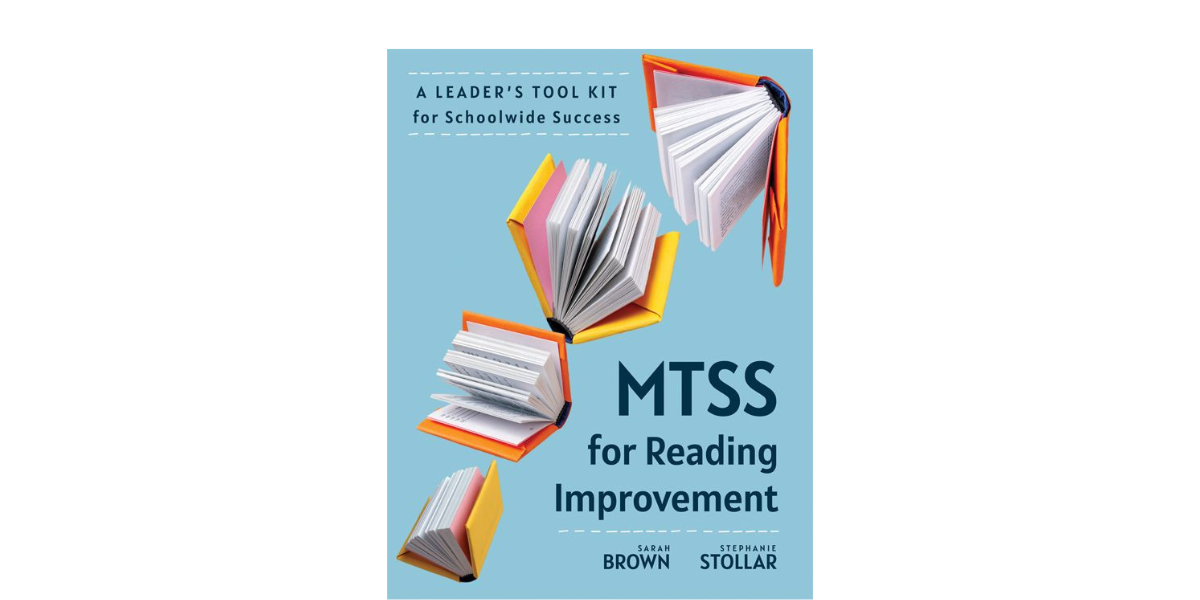Unstoppable

What a school year it has been! I am bursting with excitement over the results I am seeing in schools. Take a look!

Want to know the secret behind these results? Targeting instruction to student needs. Yep - that's it!
-
Find out what students need
-
Give it to them in the ELA block
-
If needed, provide more of it each day
What these schools are doing:
-
targeting instruction to the lowest skill deficit
-
grouping across the grade level
-
placing every student in a group taught by an adult
-
using evidence-aligned intervention programs
-
responding to student data by adapting the effective programs
-
using staff flexibly to blur lines between general education, special education, EL, and gifted
-
increasing the amount of time in skill-based instruction through aligned intervention support
What these schools are not doing:
-
making students sit through instruction on things they already know or don't have the pre-requisites to learn
-
ask
...
In Between Days

The process of large-scale school change is complicated and messy. If there was a clear path forward, it would have already been found and implemented.
So here we are, a few years into a movement toward aligning reading instruction with the science, and it seems like a good time to offer a few observations. While legislators and policy makers have good intentions, in some cases they have gotten out ahead of the existing research, available products, and/or the capacity of educators. The rush to action may be doing more harm than good.
To steer out of the curve, or help slow-to-adopt states and districts avoid a tailspin, I'm offering questions in four areas of action: Assessment, Professional Development, HQIM, and Reading Plans.
The table below positions these four common policy areas the top. The bottom section lists some of the unintended negative outcomes of the policies. The area between includes questions that attempt to unpack the nuance related to each area. I hope the quest...
2024 Holiday Book List

Dr. Stephanie Stollar is the founder of Stephanie Stollar Consulting LLC and the creator of The Reading Science Academy. She is a part-time assistant professor in the online reading science program at Mount St. Joseph University, and a founding member of a national alliance for supporting reading science in higher education.
You can follow Stephanie Stollar Consulting and the Reading Science Academy on Facebook, YouTube, Twitter, Instagram and LinkedIn, and contact her at [email protected].
⭐️ Get Dr. Stollar's free resources on the science of reading here! →
Guest Blog by Amy Siracusano

When Stephanie asked me to write a guest blog, I thought to myself… I’ve never written a blog in my life. Then I thought, I have to try it. I must branch out and learn a new structure. That is exactly what occurred in the two schools that I will speak about in this blog—we branched out and tried a new structure. And, it worked!
This past school year, I worked in two K - 5 Title I schools. School A served primarily White students in a small rural town in the southeast. School B served primarily Black and Hispanic students in an urban area in the south-central part of the country. Both schools used DIBELS 8th edition for universal screening and progress monitoring, and had less than 80% of their students meet the benchmark on the Reading Composite Score.
School A’s daily schedule included an additional 30 minutes for literacy instruction called WIN block (What I Need time). During WIN, students moved around the building to a WIN instructor, were grouped based on data, and were provide...
Same As It Ever Was...

Teachers are telling me they have been mandated to implement their core reading program "with fidelity." I'm not sure this is a good idea.
What if the core program has no research on its effectiveness?
What if the core program is not well-matched to the needs of the students?
What if elements of the instructional system won't support accurate and consistent implementation of the core program?
If a doctor prescribed an antibiotic to treat a broken leg, you wouldn't expect the bone to be healed by faithful administration of the antibiotic treatment - it is the wrong treatment for the concern.
Before mandating implementation fidelity, schools should carefully consider the needs of the students, analyze available resources, and design evidence-based instruction for Tier 1. In other words, they should engage in team-based, systems-level problem solving.
Here are some thoughts for your consideration.
What Is Implementation Fidelity?
Implementation fidelity, also referred to as treatm...
You May Be Right, I May Be Crazy

I keep getting asked the same questions and running into the same issues related to MTSS and Tier 1. These questions and issues are challenging my understanding of the MTSS model. Am I crazy or have we strayed from the original intent of the model?
So I'm going to put some ideas out there for you to (respectfully) react to.
1. Tier 1 instruction shouldn't always be implemented with fidelity.
2. All students don't necessarily need the same Tier 1 instruction.
3. Tier 1 instruction shouldn't always be delivered in whole group.
4. Students with disabilities don't have to have the same Tier 1 instruction as the rest of the grade.
Here are what I consider to be characteristics of effective Tier 1 reading instruction:
- designed for the purpose of primary prevention of reading failure
- available to all students
- planned for a protected block of time
- aligned to research in terms of what to teach and how to teach
- highly differentiated (not always all whole group)
- designed to meet th ...
Tier 2 FAQs

As more schools use MTSS as the framework for implementing the science of reading, questions arise about the characteristics of the tiers of instruction.
Here are a few FAQs about Tier 2 intervention.
1. What Is The Purpose of Tier 2?
Tier 2 is:
- provided to the small group of students who are still at risk after the provision of effective Tier 1 instruction
- designed to accelerate learning
- aimed at catching students up to grade-level reading goals
2. How Is Tier 2 Defined?
The characteristics of Tier 2 include:
- small group
- in addition to, not instead of, Tier 1 instruction
- 3-5 times per week
- 30-45 minutes per day
- explicit, systematic, research-aligned instruction, delivered by a trained instructor
- focused on eliminating skill deficits
- frequent progress monitoring so intervention can be changed if it isn't working
- planned by a grade-level or school-level planning team using screening and diagnostic assessment data
3. How Is Tier 2 Different From Tier 1?
Tier 2 i...
Should You LoveCATs?

Early literacy screening is one of the most important educational technologies available today. I believe districts are not taking advantage of the full opportunity available in universal screening when they choose to use Computer Adaptive Tests (CATs).
What is a CAT?
A CAT is essentially an achievement test that is used to identify risk status. Students take the test on a computer. The test includes many, many items that have been ordered from easy to hard. Students are first presented with items somewhere in the middle of the difficulty scale, or at a place indicated by their grade level, or perhaps based on a previous test score.
When the student responds correctly to an item or items, they are presented with more difficult items, based on the performance of other students who previously took the test. When the student responds incorrectly to an item, they are presented with easier items. Each student has their own unique path through the assessment.
The computer software does a...
Ode to MOY

Ode to MOY (Middle of Year)
The middle of the school year is a great time to stop and take stock of the path you are on. Middle of year screening results provide useful information for planning what Tier 1 reading instruction should look like for the second half of the school year.
"And there's still time to change the road you're on." -- Led Zeppelin
Listed below are key considerations for grade-level team planning:
1. What percentage of students in each grade scored in the at-risk range on the screening measures? If less than 20% are at risk, analyze and improve the Tier 2/3 system. If more than 20% are at risk, analyze and improve the Tier 1 system.
2. Is this an increase or decrease from beginning of year? Discuss the potential reasons for the change in scores from beginning to middle of year.
3. Review the characteristics of effective Tier 1 instruction (primary prevention of reading failure). Which characteristics could be changed or improved to reduce risk in each g...
Holiday 2022 SOR Booklist

Dr. Stephanie Stollar is the founder of Stephanie Stollar Consulting LLC and the creator of The Reading Science Academy. She is a part-time assistant professor in the online reading science program at Mount St. Joseph University, and a founding member of a national alliance for supporting reading science in higher education.
You can follow Stephanie Stollar Consulting and the Reading Science Academy on Facebook, YouTube, Twitter, Instagram and LinkedIn, and contact her at [email protected].
⭐️ Get Dr. Stollar's free resources on the science of reading here! →




